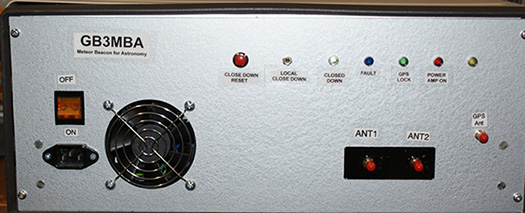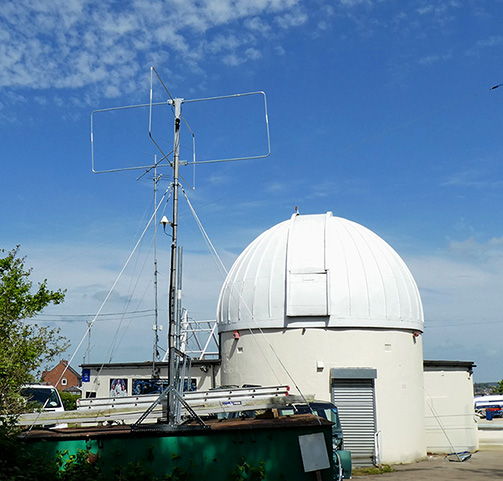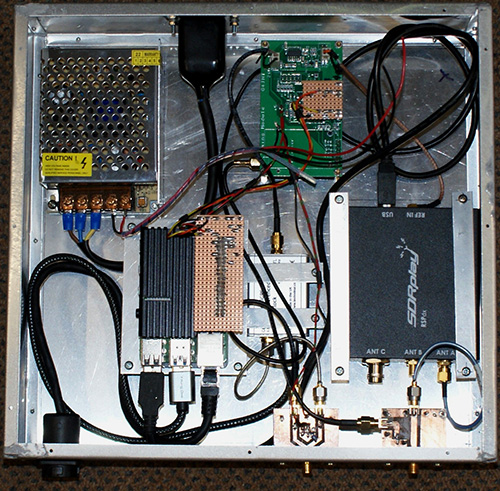The UK meteor beacon and receiver network is a project
run by volunteers from a number of different UK organisations..
The aim is to provide a meteor analysis system based on radio
reflections from the ionised trail from meteors..
This is achieved by using a 50Mhz beacon transmitter
and a network of linked receivers. The receivers are connected to a radio server
to provide both real time and post acquisition analysis for various radio astronomy
and STEM organisations
 |
|
The UK meteor beacon transmitter (GB3MBA) is located at the Sherwood Observatory of the Mansfield and Sutton Astronomical Society. This beacon transmits a circular polarised signal vertically upwards to illuminate the region of the sky where meteors typically burn up creating ionisation reflective to radio. Echoes from these ionisation trails are picked up by the receiver network and can be used to detect, count and study meteor events over much of the UK 
|

|
The receiver network comprises of a number of remote SDR (software Defined Radio) units located at strategic locations determined by the ambition to minimise aircraft reflections and optimum meteor reflections. |
|
| This Map give some insights into the receiver network for the GB3MBA Meteor beacon.
The transmitter is marked in red and beams vertically upwards with Right Hand Circular Polarisation
illuminating a region with a diameter of about 400km at the altitude where meteors burn up creating ionisation regions that are reflective to radio.
This is at the -3dB or half power point so a larger area is illuminated but with reduced power. The receivers in the network are marked in Blue with coloured lines indicating the -3dB points of their antenna beams. |
 |
The shaded area indicates the main area “covered” by all the receivers in the network. Echoes from outside the shaded area and beam markers will still be seen but at reduced strength. |
|
| The receivers used are the SDR Play RSPDX feeding a Raspberry
PI SBC, this together with some custom built hardware and software provide
a web feed of the I&Q data together with various Meta data
including precise timing information. This data is then fed to a central radio server where the I&Q data is processed, managed and distributed to where it is needed. The planned distribution is to a number of locations :-
|
 |
If you want to get involved please do Get In Touch